Concrete floors are a popular choice for many people because of their strength and how long they last.
Whether you are building a new place or remodeling, understanding your options can help you make the best choice for your floors.
In this guide, we will explore the different types of concrete flooring available.
Let’s begin!
Concrete Flooring Types
The concrete flooring types are exterior stained concrete, interior stained concrete, metallic epoxy, overlays, garage floors, quartz flooring, epoxy chip flooring, standard epoxy, and polished concrete.
1. Exterior Stained Concrete
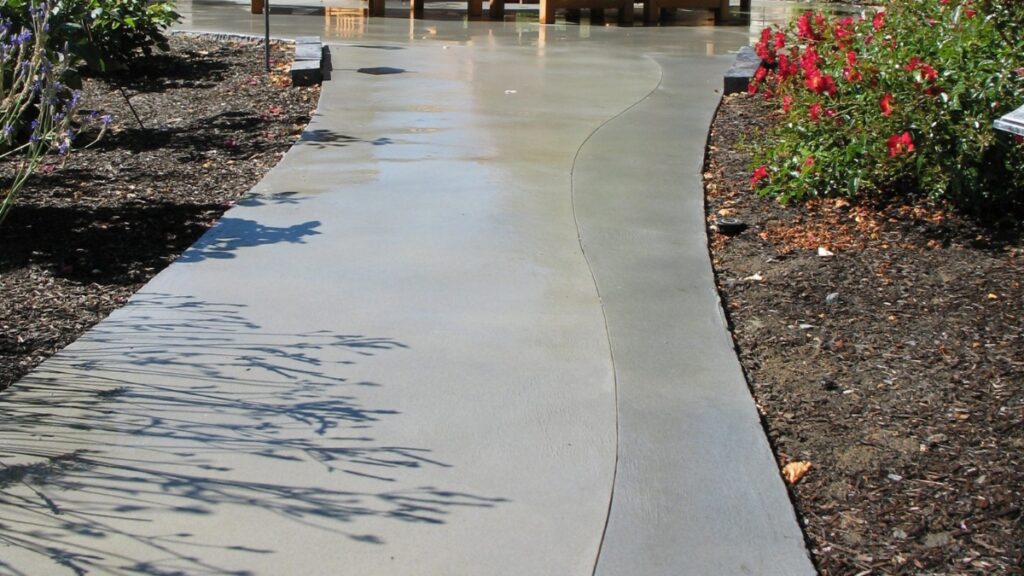
Exterior stained concrete flooring is a popular choice for those seeking both durability and aesthetic appeal.
This method involves adding color to concrete, which penetrates and gives a rich, long-lasting hue that won’t fade or peel away.
Homeowners can choose from a wide range of colors to achieve the perfect look for their patios, driveways, or walkways.
It stands up to the elements and requires minimal maintenance, which makes it an economical option over time.
2. Interior Stained Concrete
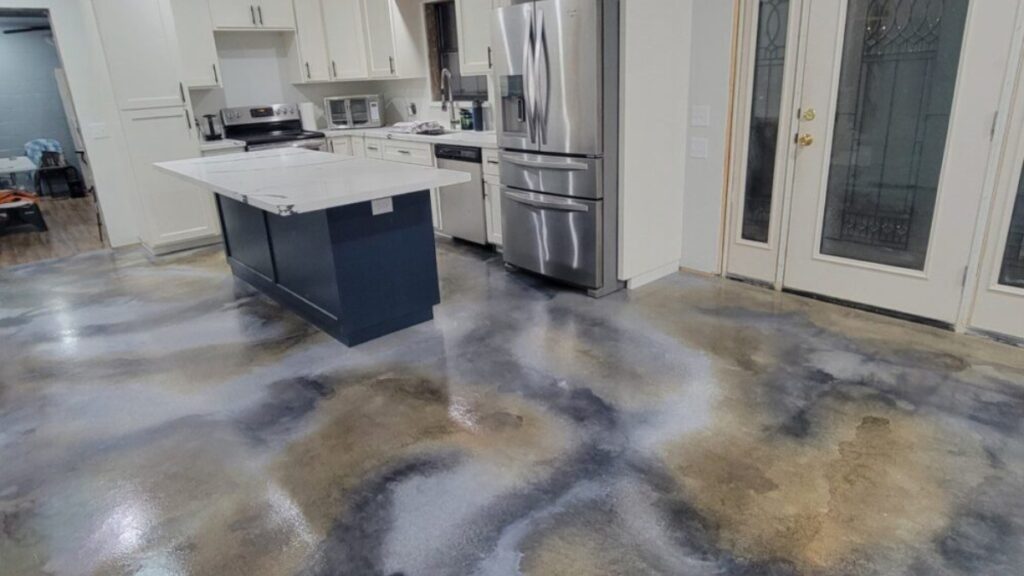
Stained concrete flooring is a versatile option that offers a blend of durability and aesthetic appeal.
Unlike plain concrete, stained concrete can be infused with rich colors and intricate designs to complement the interior decor.
It involves applying stains made from acid-based chemical compounds that react with the concrete, creating unique patterns and hues that are impossible to replicate.
This means that each stained concrete floor is one-of-a-kind, much like a piece of art.
It elevates the look of a room and maintains the practical benefits of concrete, such as ease of maintenance and resistance to wear and tear.
Ideal for both residential and commercial settings, stained concrete is an excellent choice for those seeking a floor that is functional and visually striking.
3. Metallic Epoxy
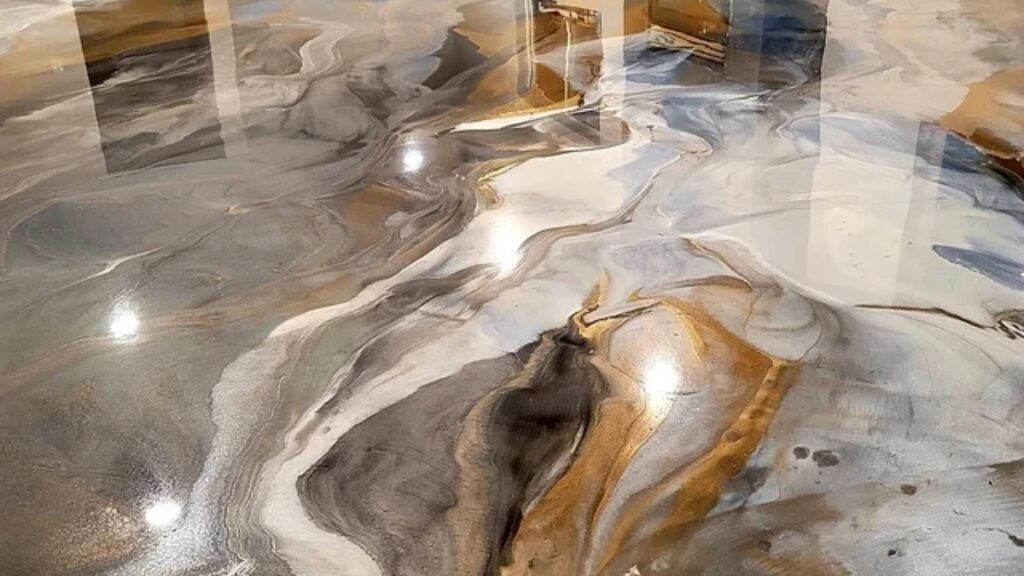
Unlike regular epoxy, which is simply a tough and durable coating, metallic epoxy includes metallic additives that create depth and movement in the floor’s appearance.
These additives can make the floor shimmer and shine, almost like there’s liquid metal beneath your feet.
Ideal for both homes and businesses, this type of flooring can mimic the look of marble, granite or even a galaxy-like effect that can make any room feel special.
Beyond aesthetics, metallic epoxy is also known for its longevity and resistance to wear, which makes it as practical as it is attractive.
4. Overlays
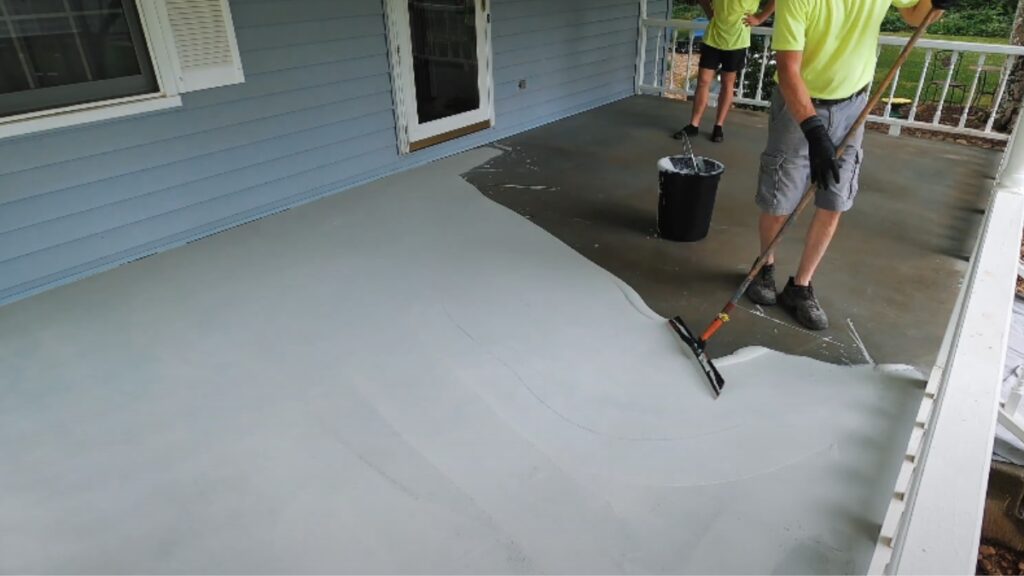
These are thin layers of material, such as polymer-modified overlays, that can be applied directly over the original surface.
Not only does this approach breathe new life into dull floors, but it also opens up a world of design possibilities.
You can choose from an array of colors, patterns, and even textures, which allow for personalized aesthetic touch.
One significant advantage of overlays is their resilience; they are designed to endure heavy foot traffic and resist wear and tear.
This makes them an excellent choice for both commercial spaces that demand durability and residential areas.
5. Garage Floors
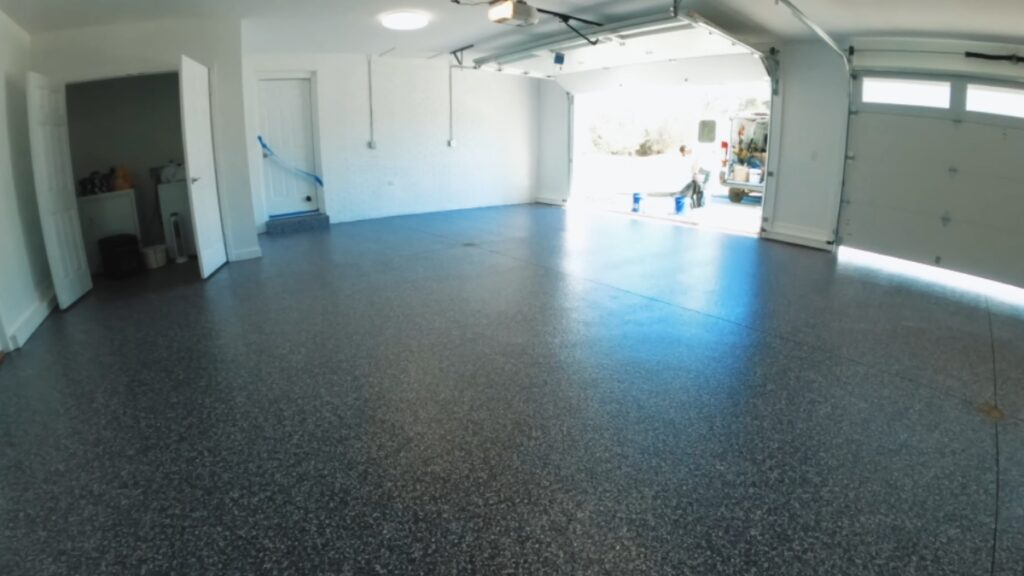
Garage floors are a standout category in the realm of concrete flooring, offering durability and resistance tailored for a high-traffic, utilitarian space.
Garage floors must withstand a variety of tough conditions, including heavy vehicles, spills from oils and chemicals, and a high frequency of foot traffic.
Innovations in concrete treatments, such as epoxy coatings or sealants, have elevated the functionality and aesthetics of garage floors.
These treatments not only reinforce the surface against wear and tear but also provide an opportunity to customize the look with color flakes, patterns, and high-gloss finishes.
6. Quartz Flooring

This type of flooring is composed of a mixture of high-performance resin and quartz crystals, which results in a tough surface that can withstand significant wear and tear.
It’s a popular choice for spaces that experience high traffic or require strict hygiene standards, like commercial kitchens or hospitals.
Quartz flooring resistant to scratches, stains, and offers design versatility with a range of available colors and patterns to match any decor.
The seamless finish and the ability to repel liquids make it a practical yet visually striking choice for modern concrete flooring solutions.
7. Epoxy Chip Flooring

At the seventh number is epoxy chip flooring, which is a unique and durable concrete floor type that involves embedding colored flakes or chips.
These chips add a touch of style, character and provide texture that can make the floor slip-resistant.
This floor type is ideal for garages, showrooms, and even commercial spaces; epoxy chip floors are known for their longevity and ease of maintenance.
The thick layer of epoxy seals the concrete, protecting it from moisture, stains, and cracks.
8. Standard Epoxy
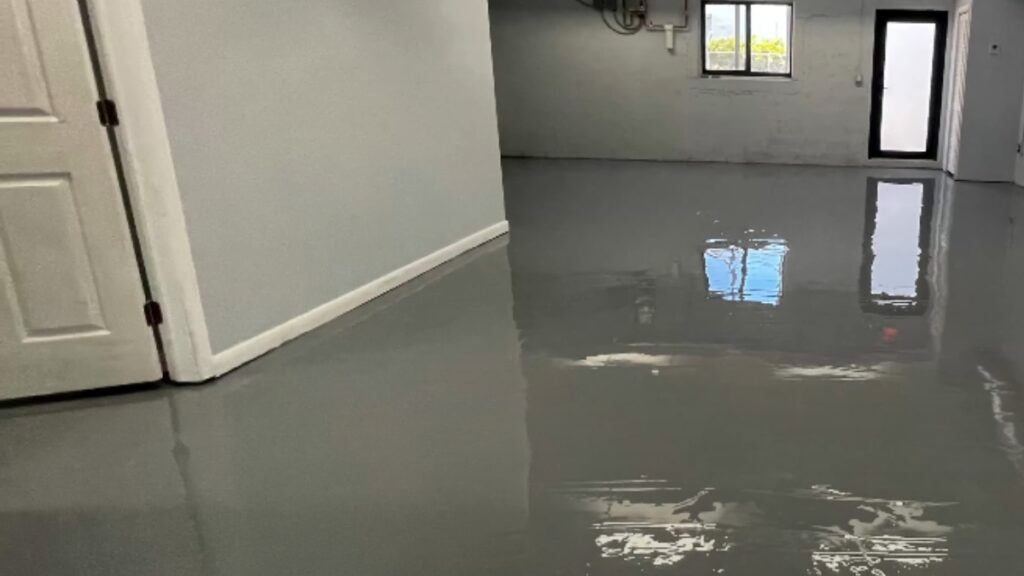
They consist of a two-part system that, when mixed, creates a hard, resistant surface that can withstand a lot of wear and tear.
What makes epoxy flooring a go-to option is its resistance to stains, water, and chemicals, making it ideal for garages, basements, and industrial environments.
These are practical and also come in a variety of colors and patterns, which allows you for customization to fit any style.
Also, epoxy floors are low maintenance and easy to clean, offering a blend of functionality and aesthetics that’s hard to beat.
9. Polished Concrete
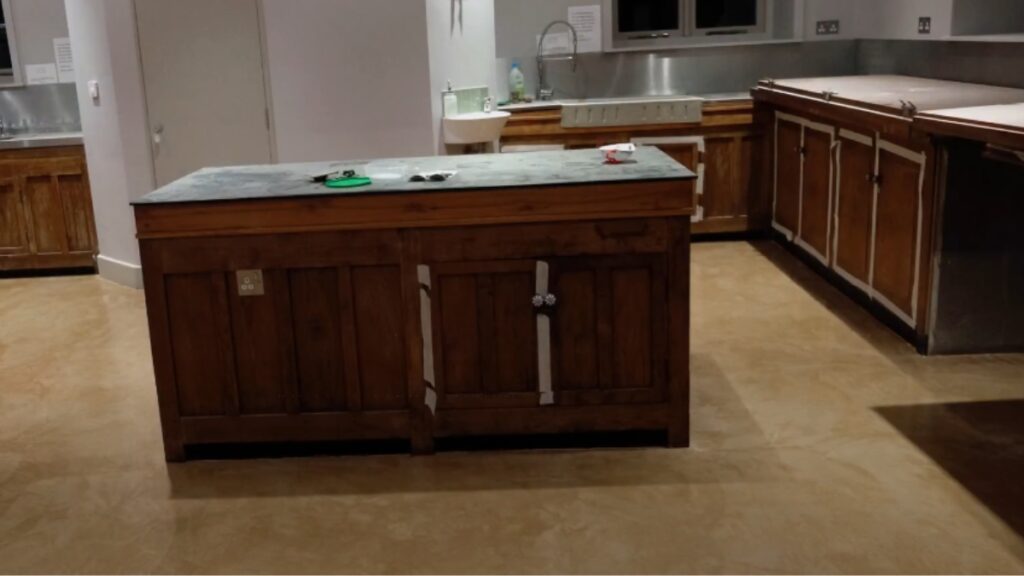
Polished concrete is a sleek and modern flooring option that has become increasingly popular in both homes and commercial spaces.
It involves grinding down the surface of existing concrete to achieve a high-gloss finish that doesn’t require waxing or coating.
This process not only yields a floor with a reflective sheen, but it also makes the floor incredibly durable and easy to maintain.
Moreover, polished concrete is cost-effective and eco-friendly, often using the existing concrete slab, minimizing waste and the need for new materials.
Find our guides on ways of building retaining concrete wall, concrete flooring pros and cons, and concrete flooring images.
To Sum It Up
Whether you’re considering polished, stamped, or stained, each concrete flooring type offers its own unique blend of durability, aesthetics, and cost-effectiveness.
These are ideal choices for anyone looking to enhance their space with a practical yet modern touch.
If you want a personalized approach to your flooring needs and to explore more options, Get a Free Estimate from our experts today.

